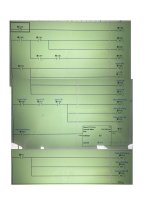FrankBerends
Member
Hi All,
Most of what I do in Click PLC is what I learned over here! But I'm running into a problem I just can't solve. I spend so much time on it and desperately now I fall back to you all...
I made two subroutines for my boat's windscreen wipers. Both routines work perfectly as long as I only use one of them. As soon as I make them both active in callable subroutines, one is working still fine and the other totally not. So it is something about blocking/not releasing the variables?
The functionality is as follows:
Ladder 1: This is just the port side wiper (there are 3 separately switched wipers). 1st push: Wiper speed 1 / 2nd push: wiper speed 2 / long push: wiper off ('parking')
Ladder 2: To simply switch on and off (speed 1 only) all 3 wipers together
Ladder two is still working if both subroutines are callable. Ladder 1 is only working when ladder 2 is not callable.
Can anyone point me in the right direction?
cheers
Frank


Most of what I do in Click PLC is what I learned over here! But I'm running into a problem I just can't solve. I spend so much time on it and desperately now I fall back to you all...
I made two subroutines for my boat's windscreen wipers. Both routines work perfectly as long as I only use one of them. As soon as I make them both active in callable subroutines, one is working still fine and the other totally not. So it is something about blocking/not releasing the variables?
The functionality is as follows:
Ladder 1: This is just the port side wiper (there are 3 separately switched wipers). 1st push: Wiper speed 1 / 2nd push: wiper speed 2 / long push: wiper off ('parking')
Ladder 2: To simply switch on and off (speed 1 only) all 3 wipers together
Ladder two is still working if both subroutines are callable. Ladder 1 is only working when ladder 2 is not callable.
Can anyone point me in the right direction?
cheers
Frank






